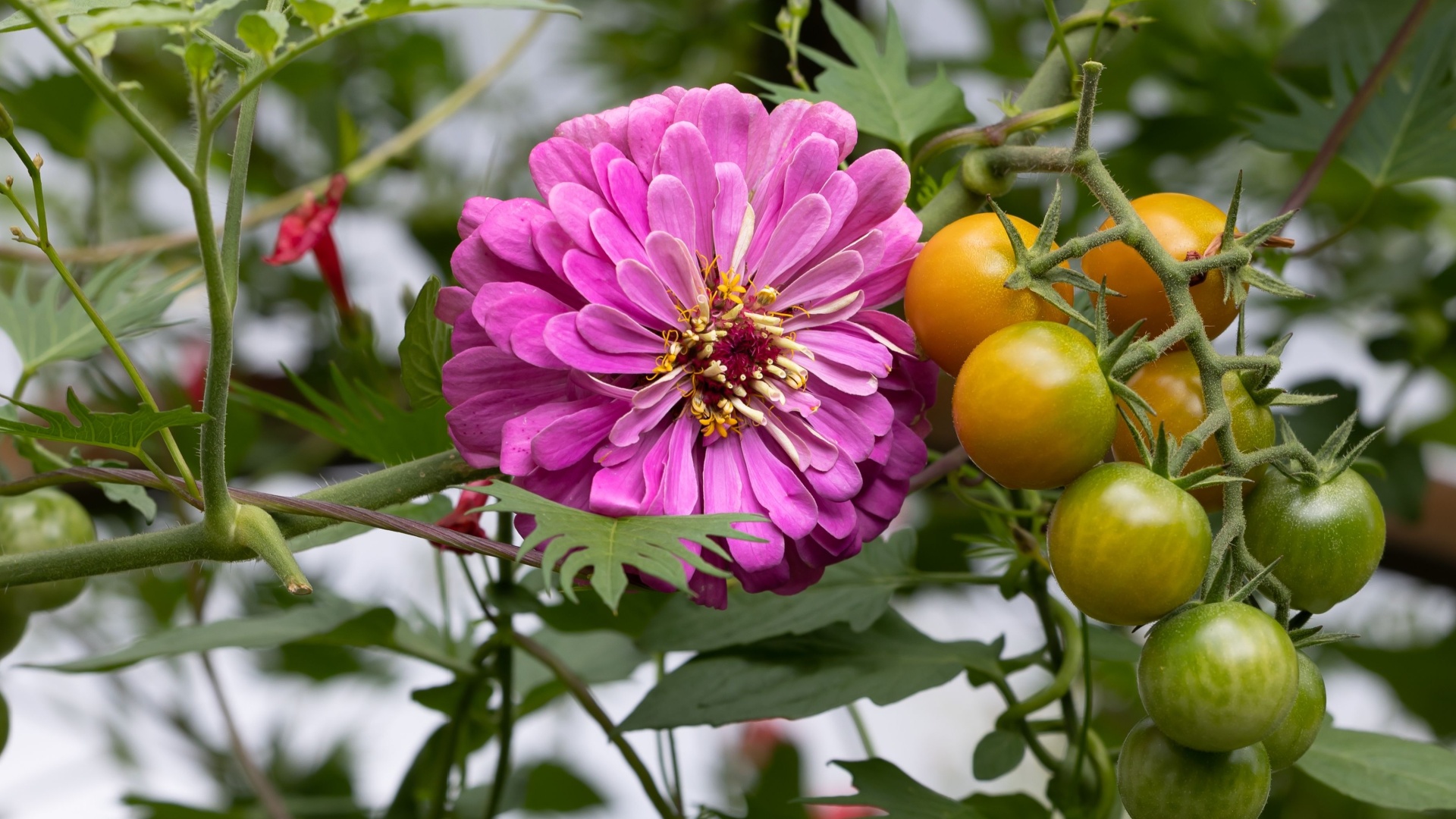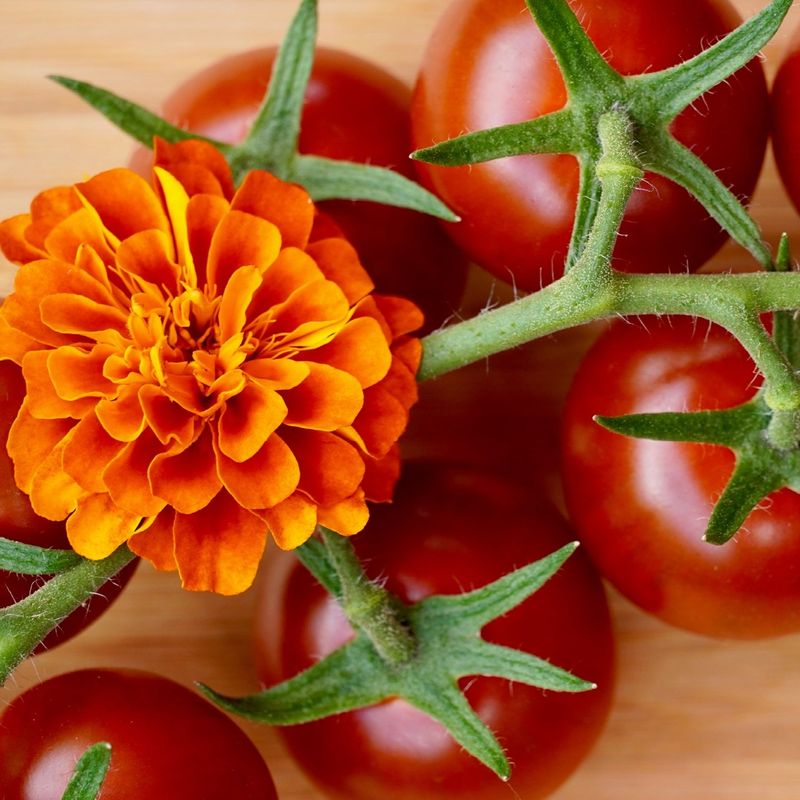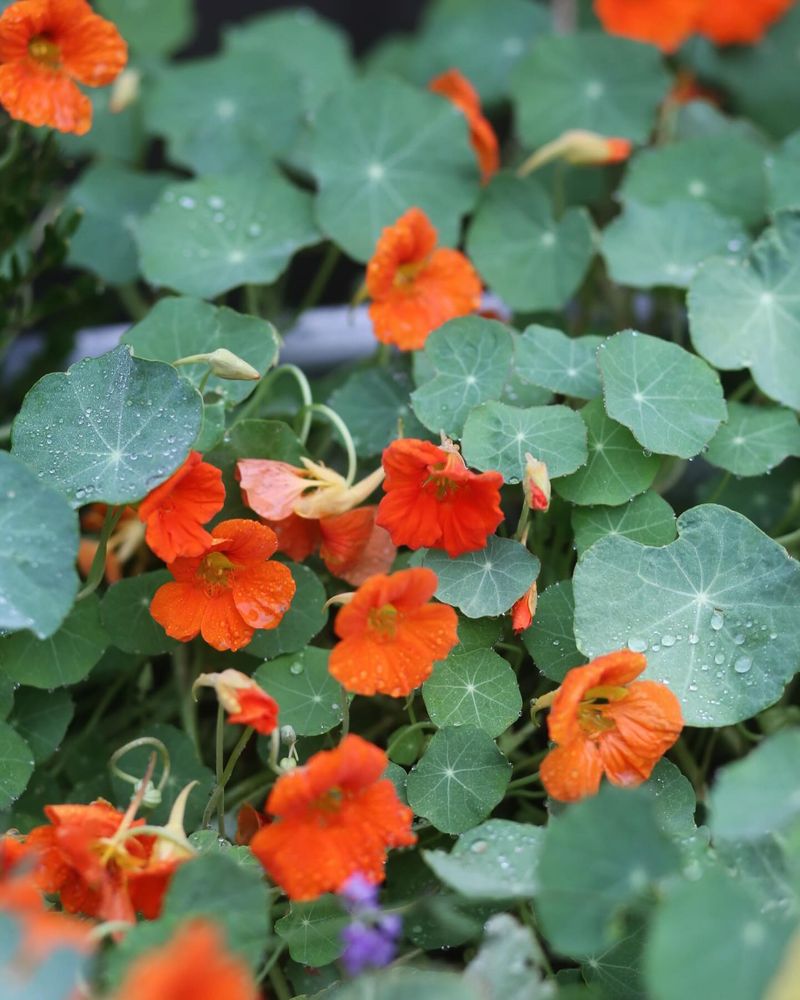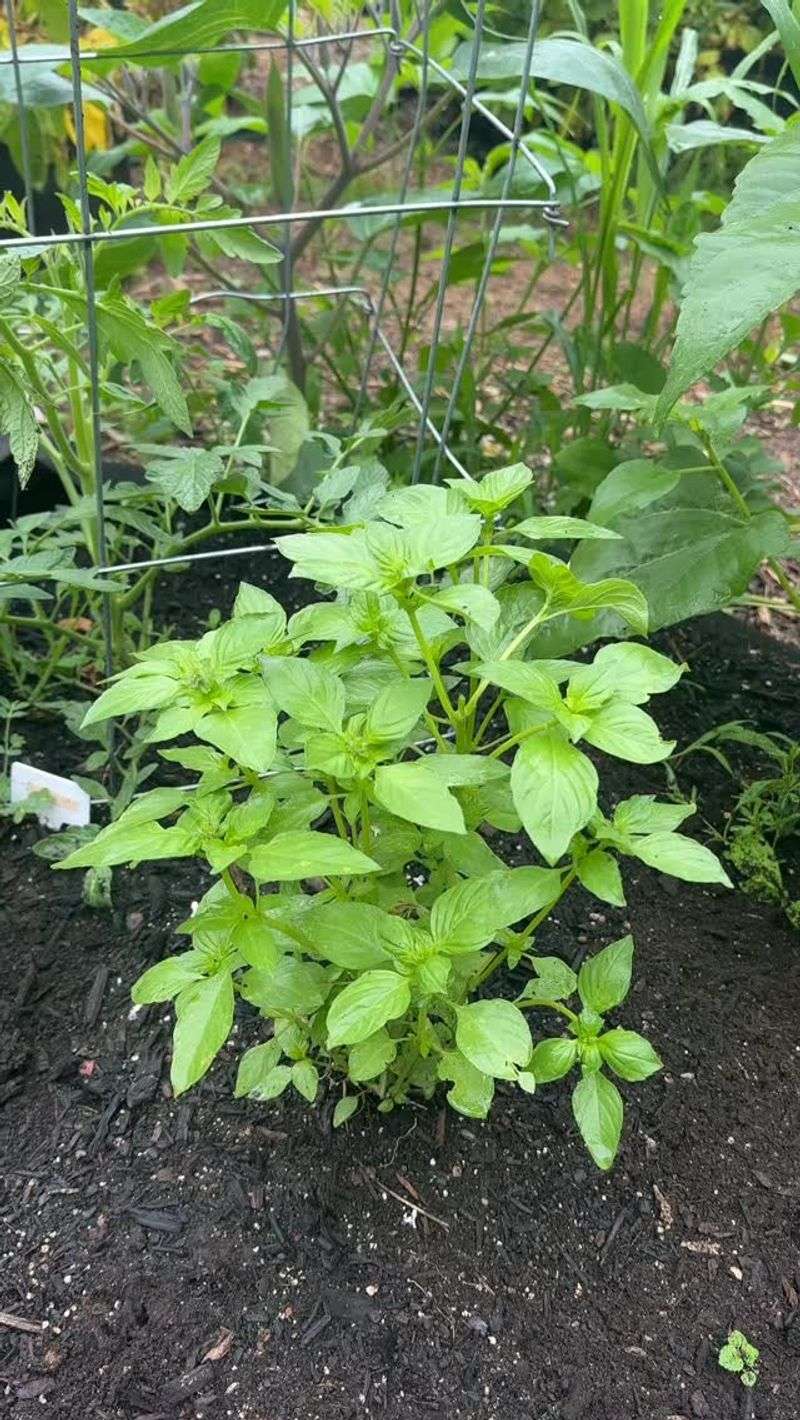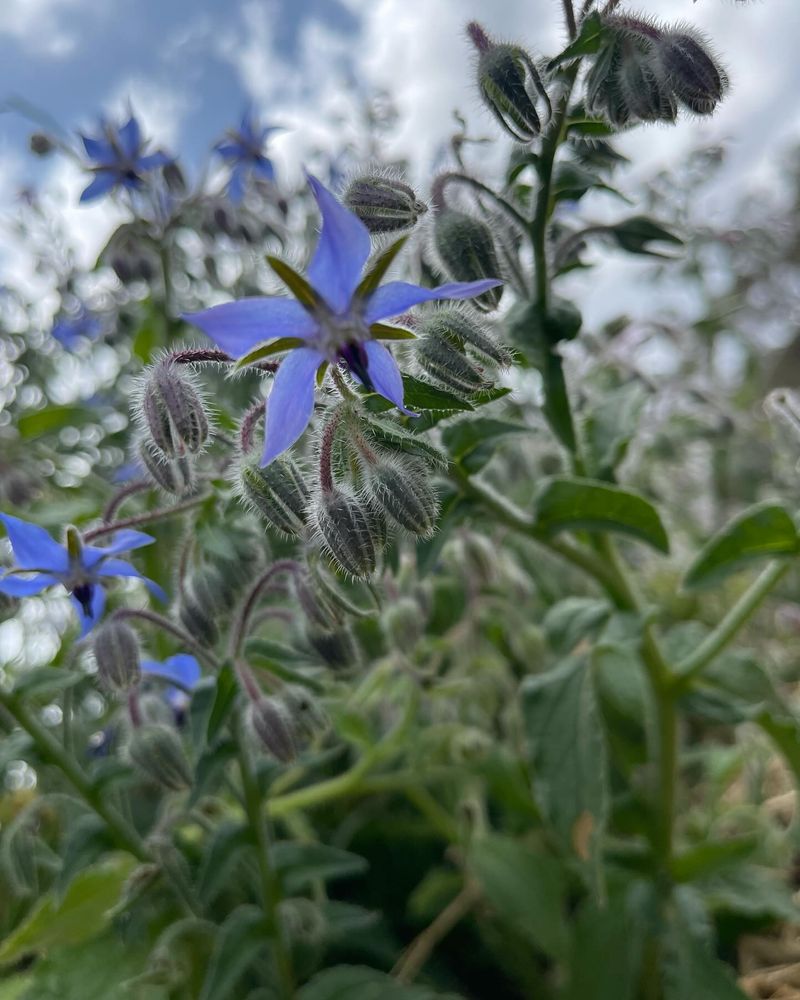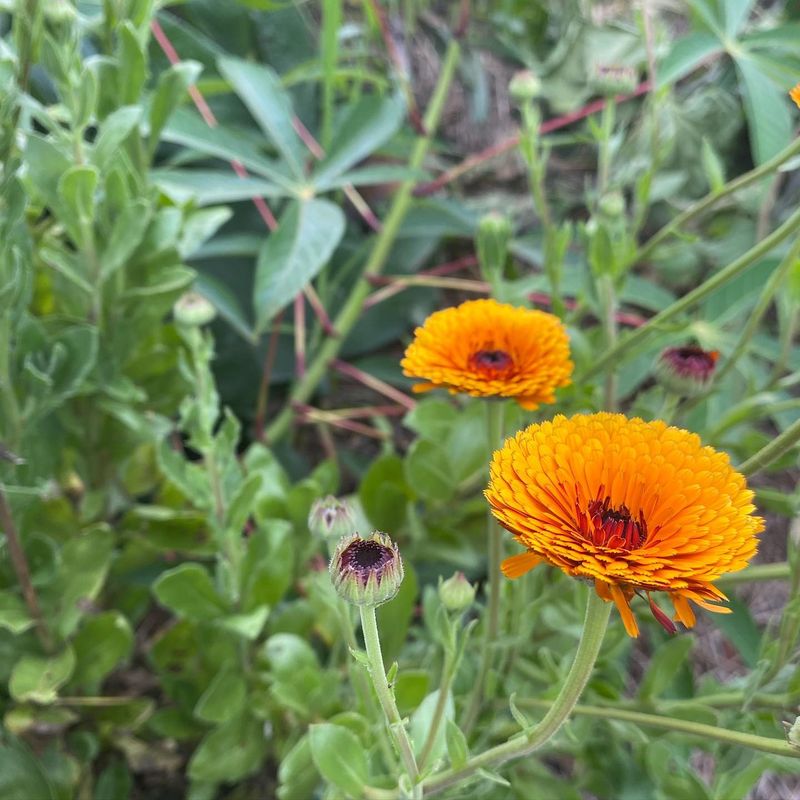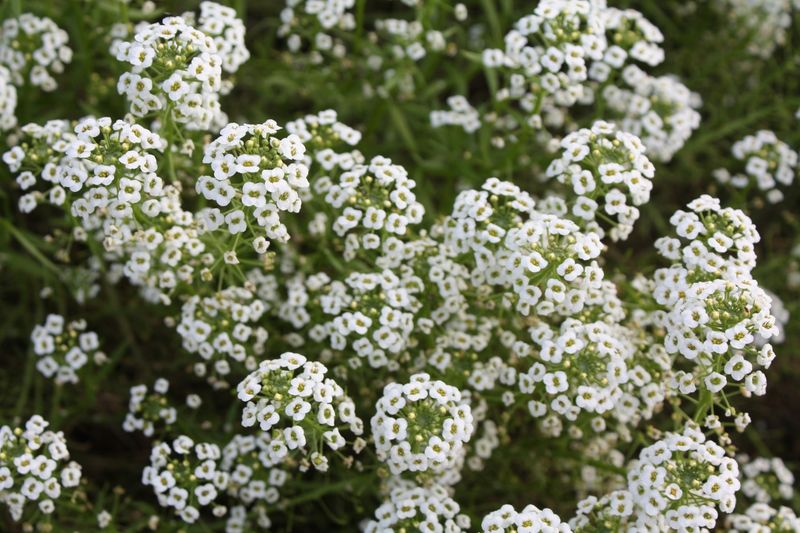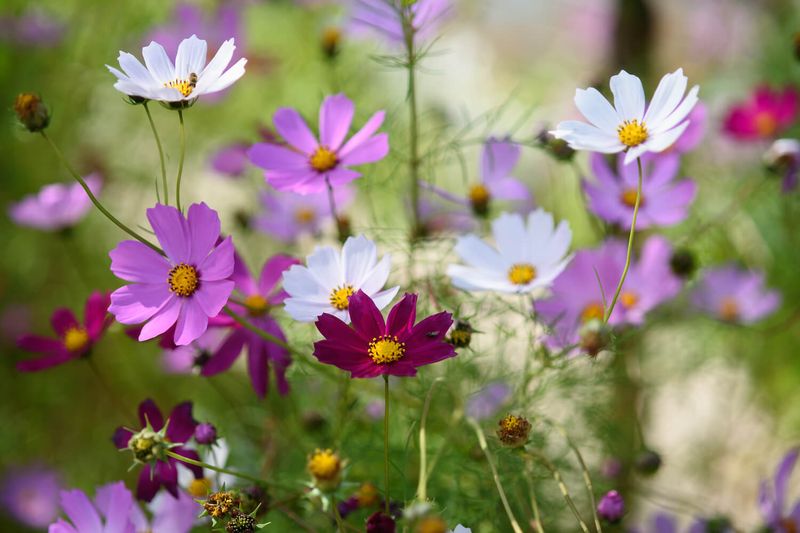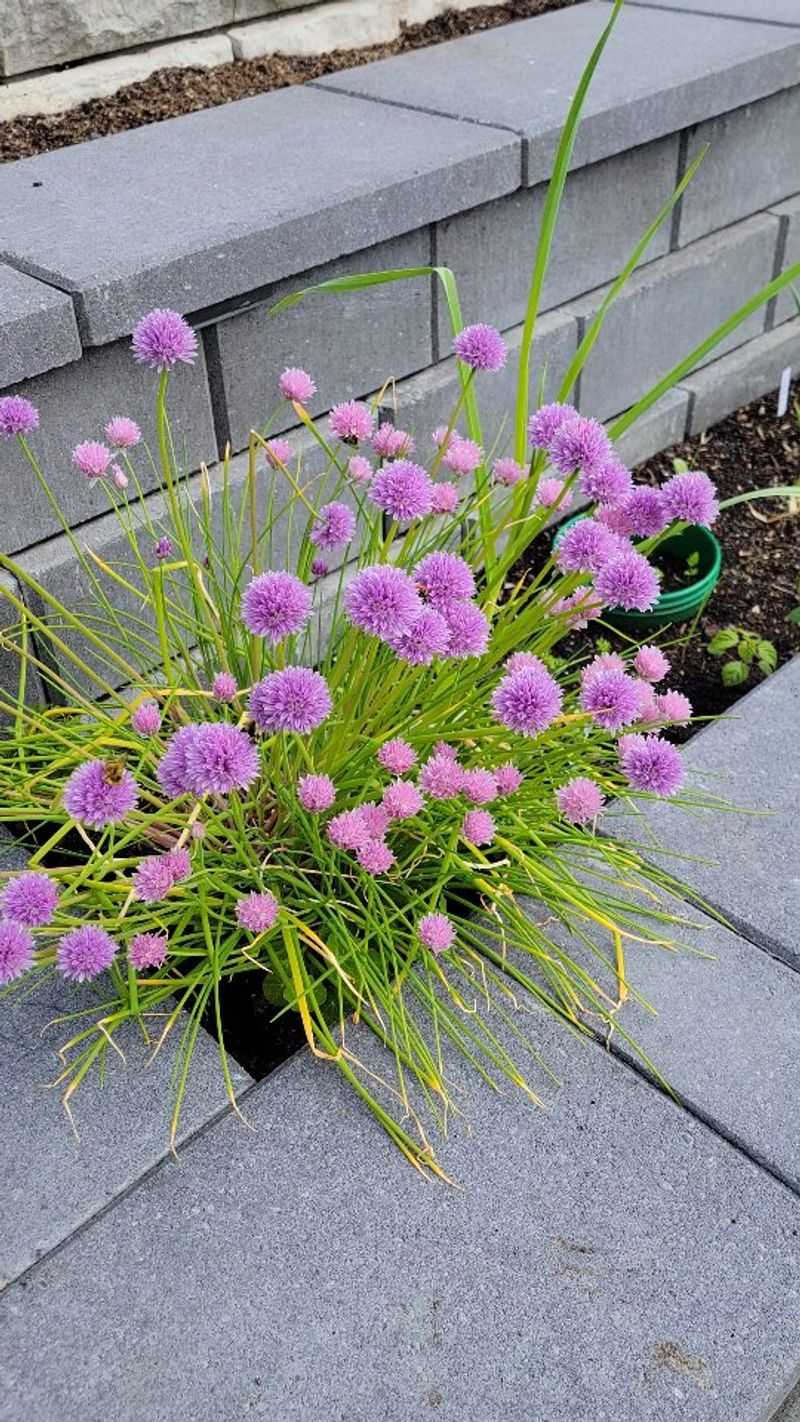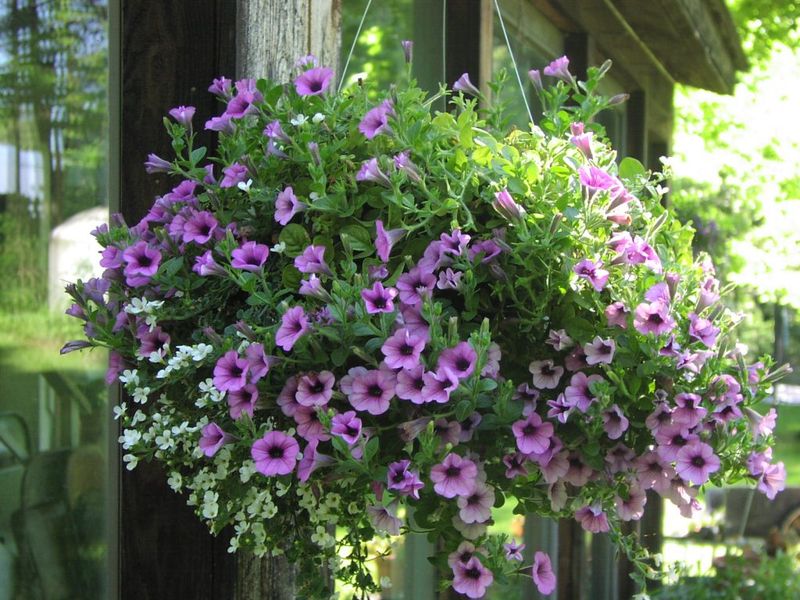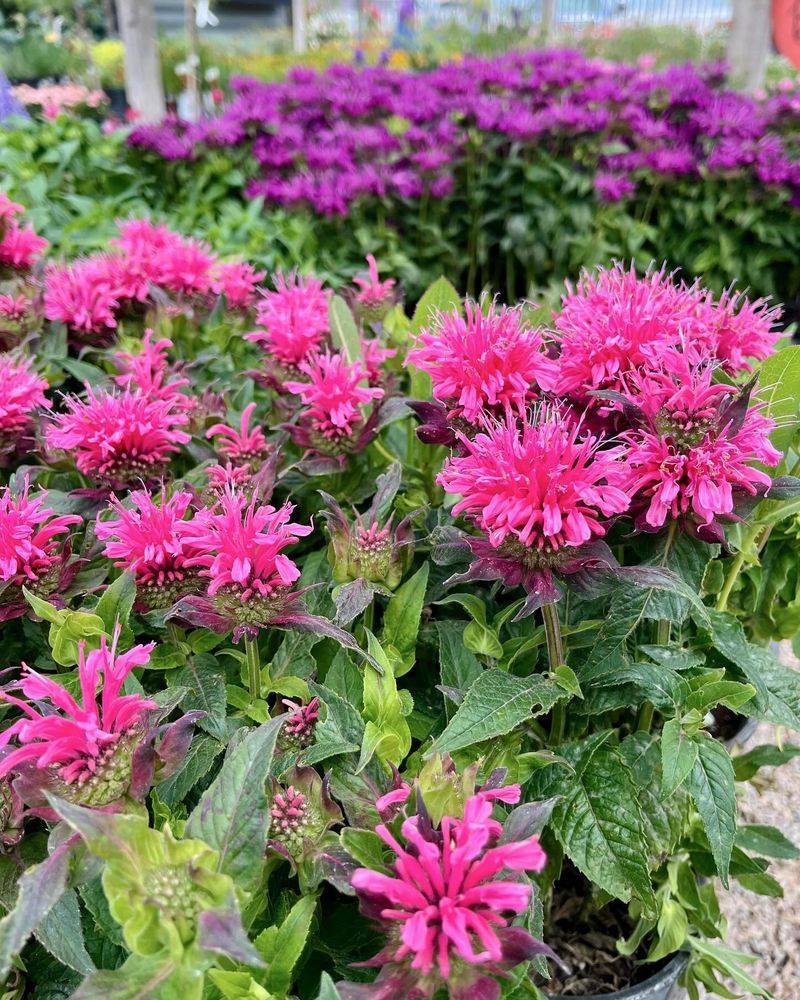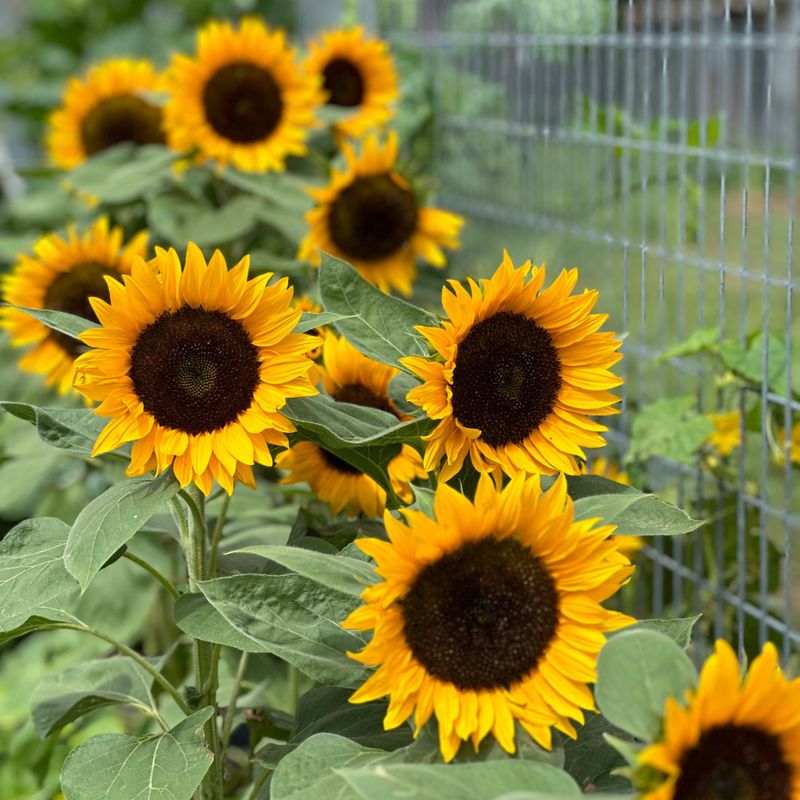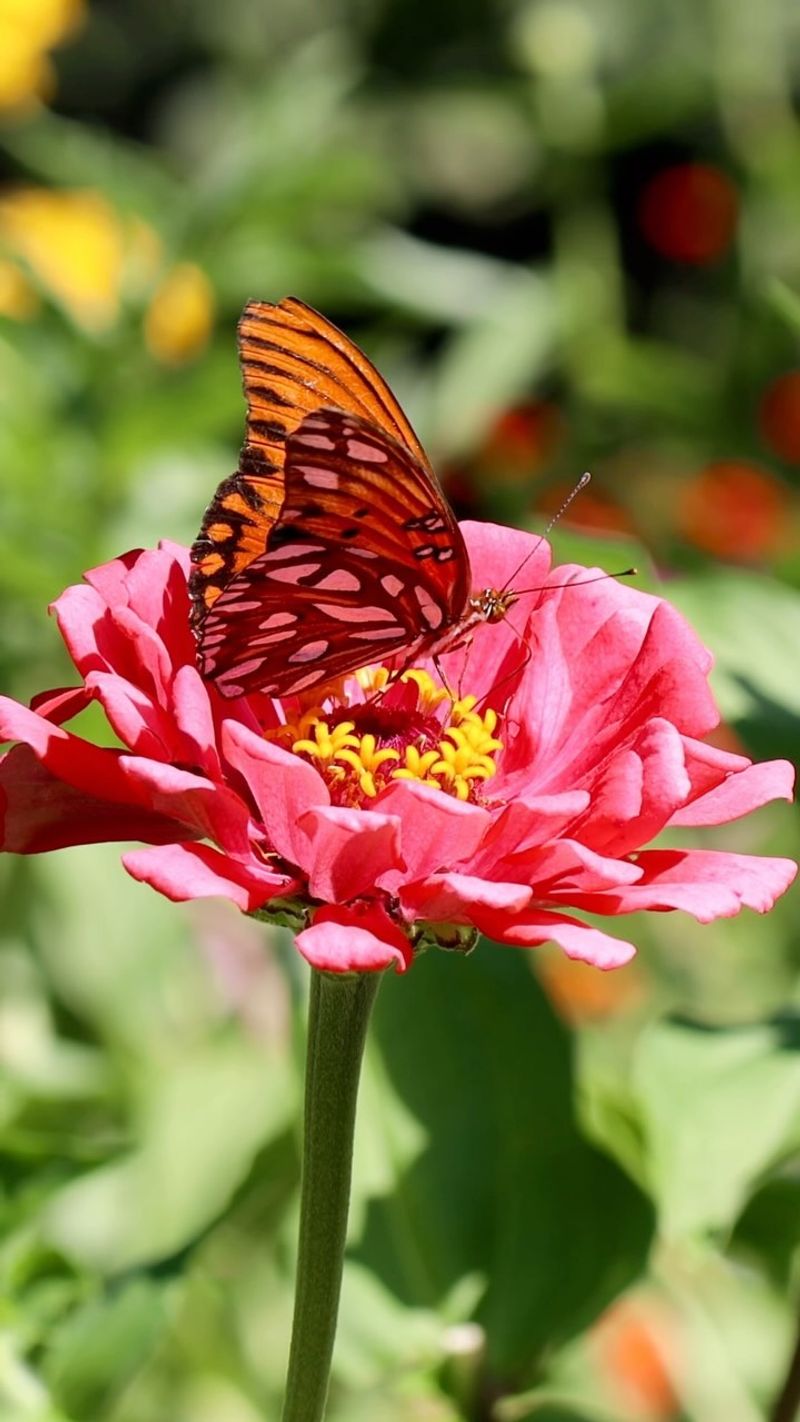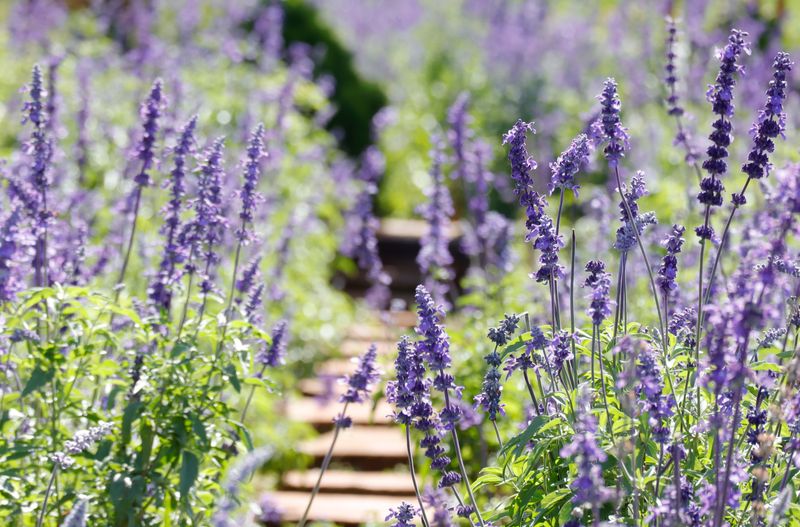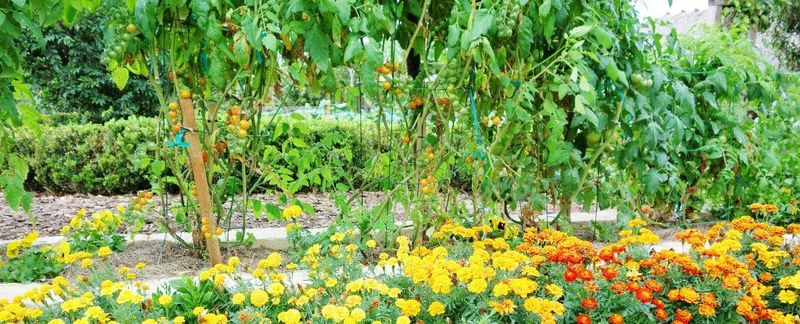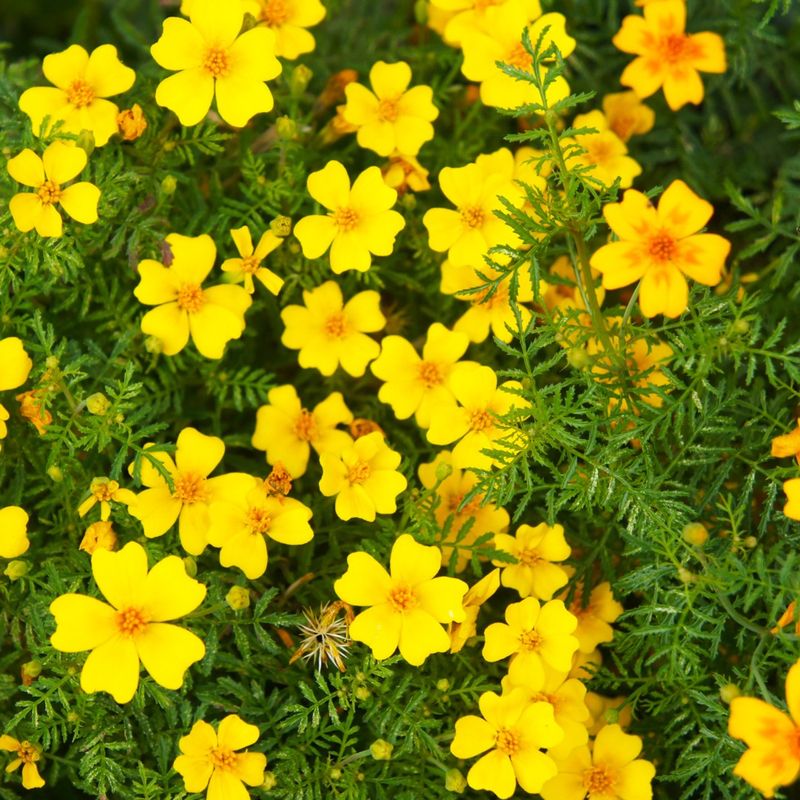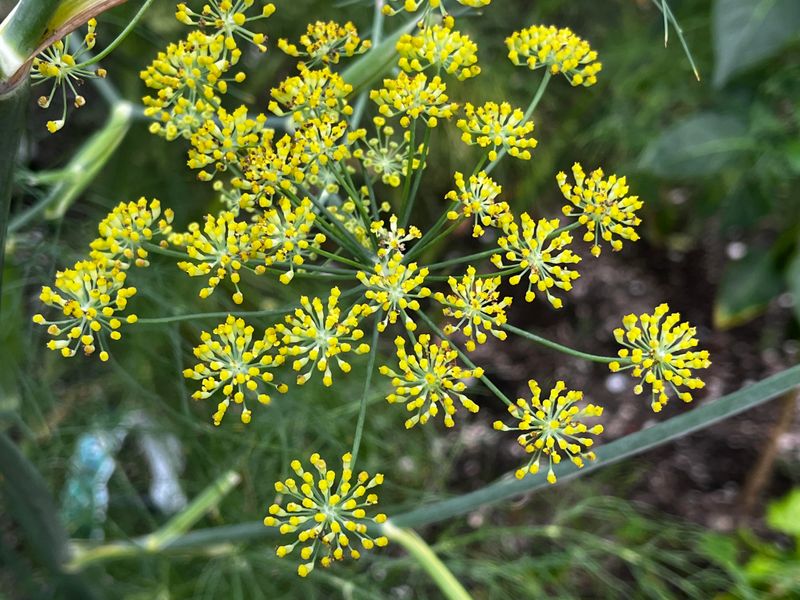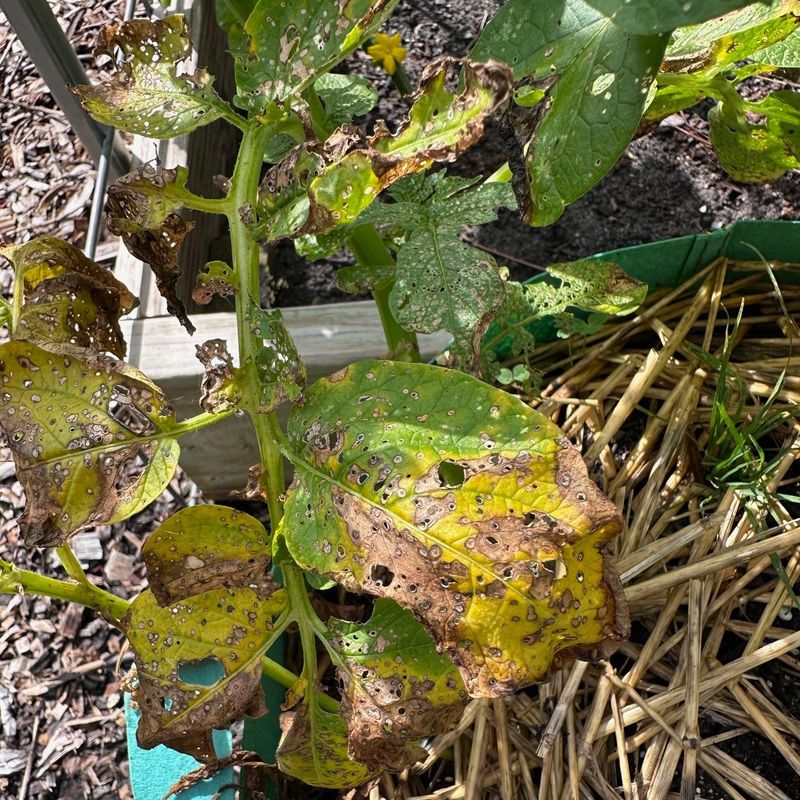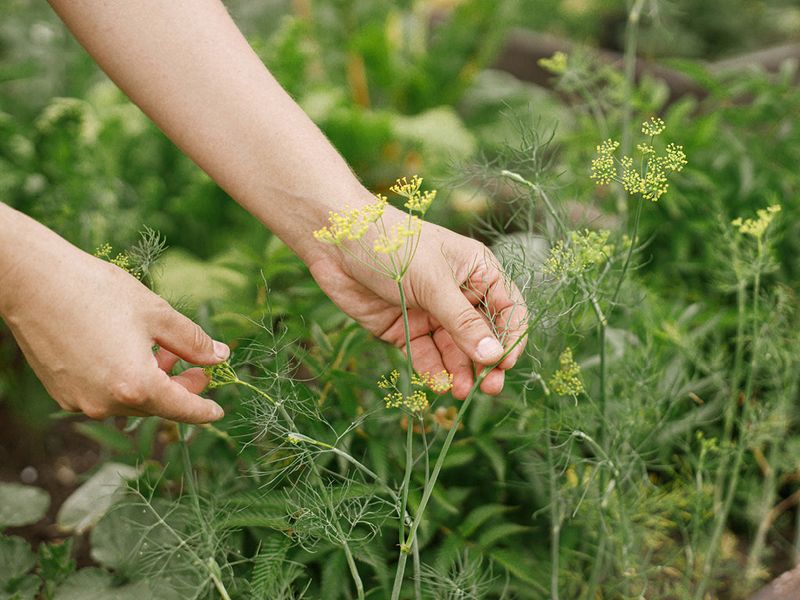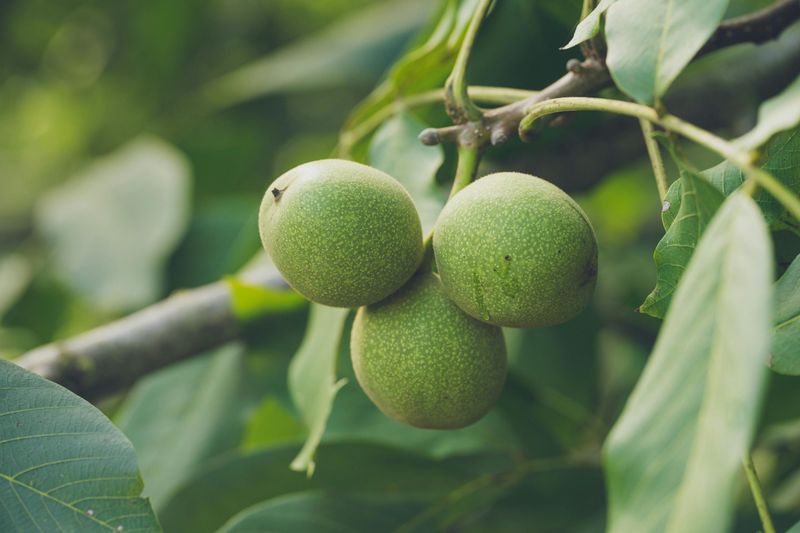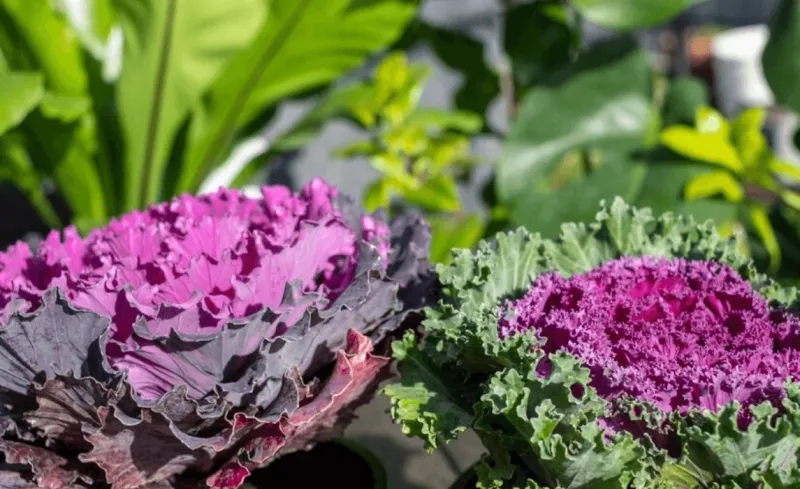Want healthier tomatoes and a more beautiful garden? Companion planting with flowers can boost pollination, control pests, and even improve yields.
These 15 flowers are perfect partners for tomatoes—and we’ll also show you 5 that do more harm than good when planted too close. Smart combos = stronger harvests!
1. Marigolds: The Ultimate Tomato Guardian
Marigolds are the superstar defenders of your tomato patch! Their strong scent drives away nematodes, those tiny worms that attack tomato roots underground. French marigolds work especially well for this job.
Plant these golden beauties around the border of your tomato bed to create a protective barrier. As a bonus, their bright orange and yellow flowers add a cheerful pop of color that makes your vegetable garden more beautiful throughout the growing season.
2. Nasturtiums: Pest-Distracting Beauties
Aphids absolutely love nasturtiums – and that’s actually good news for your tomatoes! These colorful flowers act as a trap crop, luring aphids away from your precious tomato plants. The vibrant orange, yellow, and red blooms create a stunning display while working hard.
Beyond pest management, nasturtium flowers and leaves are edible with a peppery flavor similar to watercress. Sprinkle them in summer salads alongside your fresh tomatoes for a garden-to-table treat that’s as beautiful as it is tasty.
3. Basil: Flavorful Companion With Benefits
While technically an herb, basil produces lovely white flowers and deserves a spot on this list for its remarkable partnership with tomatoes. Gardeners have long noticed that tomatoes grown alongside basil develop better flavor and seem healthier overall.
The aromatic oils in basil repel flies and mosquitoes while masking the scent that attracts tomato hornworms. Position basil plants between your tomatoes, about 10-12 inches apart. The relationship works so well that even harvested, these two ingredients create culinary magic together in countless recipes!
4. Borage: The Blue Star Pollinator
Borage’s stunning star-shaped blue flowers make it a standout companion for tomatoes. This Mediterranean native attracts tons of bees and other beneficial insects that help pollinate your tomato blossoms, leading to better fruit production.
Beyond attracting pollinators, borage actually improves tomato flavor and growth. The plant contains minerals that enrich the soil around your tomatoes. As an added bonus, borage is self-seeding – plant it once, and it’ll likely return year after year without any extra work from you!
5. Calendula: The Healing Helper
Often called pot marigold (though unrelated to true marigolds), calendula sports bright orange and yellow daisy-like flowers that brighten any tomato patch. These cheerful blooms attract beneficial insects like lacewings and hoverflies that feast on tomato-munching aphids.
Calendula roots release substances that improve soil health and deter nematodes. Many gardeners notice stronger, more disease-resistant tomato plants when calendula grows nearby. As a medicinal plant with anti-inflammatory properties, you can also harvest calendula petals for homemade salves while it protects your tomatoes!
6. Alyssum: Low-Growing Groundcover Ally
Sweet alyssum creates a living mulch beneath tomato plants with its low-growing carpet of tiny white, purple, or pink flowers. This ground cover reduces weeds naturally and helps retain soil moisture – two huge benefits for thirsty tomato plants.
The abundant blooms attract hoverflies, whose larvae devour aphids that might otherwise attack your tomatoes. Alyssum’s shallow roots don’t compete with deeper-rooted tomatoes for nutrients. For best results, plant alyssum around the base of tomato plants after they’re established, leaving a few inches of space around the stems.
7. Cosmos: Tall Guardians With Pest-Fighting Power
Cosmos flowers stand tall on slender stems, creating a beautiful backdrop for tomato plants while attracting beneficial insects. Their feathery foliage and pink, white, or magenta blooms bring butterflies and bees to help pollinate your entire garden.
Green lacewings particularly love cosmos and will lay eggs nearby. Their larvae are voracious predators of aphids, mealybugs, and other tomato pests. Plant cosmos behind your tomatoes where their height won’t shade the sun-loving tomato plants but will still provide pest protection and visual interest throughout the growing season.
8. Chives: Purple Pom-Pom Protectors
Chives produce adorable purple pom-pom blooms that bees absolutely adore. Like their cousin garlic, chives contain sulfur compounds that help prevent fungal diseases common in tomatoes and repel certain insect pests.
The clumping growth habit of chives makes them perfect for planting between tomato plants or as a border. Beyond protection, chives improve the flavor of neighboring tomatoes! Allow some chive plants to flower for pollinator benefits, while harvesting others for your kitchen – their mild onion flavor pairs wonderfully with fresh tomatoes in summer dishes.
9. Petunias: Colorful Pest Deterrents
Petunias aren’t just pretty faces – these popular ornamental flowers actively repel aphids, leafhoppers, and asparagus beetles that might otherwise damage your tomato plants. Their sticky stems can even trap small insects!
Available in countless colors, petunias allow you to design a beautiful tomato garden that’s functional too. Plant them in containers placed between tomato plants or as a colorful border. Their trailing habit works especially well in hanging baskets positioned near tomatoes, creating a multi-level garden that maximizes growing space while providing pest protection.
10. Bee Balm: Pollinator Paradise
Bee balm’s showy whorls of red, pink, or purple flowers create a pollinator paradise near tomato plants. Hummingbirds, butterflies, and native bees flock to these blooms, increasing pollination throughout your garden and boosting tomato yields.
Also known as monarda, bee balm belongs to the mint family and shares some disease-resistant properties that benefit neighboring plants. The aromatic leaves deter some tomato pests while attracting beneficial insects. Position bee balm on the north side of tomatoes so its taller growth (2-4 feet) won’t shade your sun-loving tomato plants.
11. Sunflowers: Tall Trellises With Benefits
Sunflowers can serve as living trellises for your tomato plants! The sturdy stalks provide natural support while their bright yellow flowers attract pollinators and beneficial insects to your garden.
Plant sunflowers on the north side of your tomato patch to prevent shading. As sunflowers grow, you can loosely tie tomato vines to them for support. Sunflowers also draw aphids away from tomatoes and attract ladybugs that feast on those aphids – creating a natural pest control system right in your garden!
12. Zinnias: Colorful Defenders
Zinnias explode with color while serving as bodyguards for your tomatoes. Their bright blooms in practically every color of the rainbow attract predatory wasps and hoverflies that hunt tomato hornworms and other caterpillars.
Unlike some companion plants, zinnias won’t spread aggressively or take over your garden. They’re perfect for planting between tomato plants or as a colorful border. For maximum benefit, choose single-flowered zinnia varieties rather than doubles – they provide easier access for beneficial insects to reach the nectar and pollen.
13. Lavender: Aromatic Pest Repellent
Lavender’s signature scent might remind you of soap or sachets, but many garden pests find it absolutely repulsive! The strong aroma masks the smell of your tomato plants, confusing insects that might otherwise munch on them.
This Mediterranean herb loves the same well-drained soil and sunny conditions as tomatoes. Plant lavender nearby but not too close – about 2-3 feet away is perfect. The purple flower spikes attract pollinators while deterring pests, plus you can harvest stems for dried bouquets or culinary use while it protects your tomato crop.
14. Geraniums: Bright Barriers Against Pests
Scented geraniums (Pelargonium species) release aromatic oils that confuse and repel cabbage worms, Japanese beetles, and other insects that might damage tomato plants. Their bright clusters of flowers in pink, red, or white add cheerful color to your vegetable garden.
Rose-scented and lemon-scented varieties work particularly well for pest protection. Plant geraniums in containers that can be moved around your tomato patch as needed. As a bonus, geraniums are drought-tolerant once established, making them low-maintenance companions that won’t compete with tomatoes for water.
15. Signet Marigolds: Edible Protectors
Signet marigolds (Tagetes tenuifolia) offer all the pest-repelling benefits of regular marigolds but with a delightful bonus – their petals are edible with a citrusy, spicy flavor! The dainty flowers in gold, orange, or red create a beautiful edging for tomato beds.
These compact plants grow 6-12 inches tall, making them perfect for borders without shading tomatoes. Their roots release compounds that deter nematodes and other soil pests. Harvest the petals to add color and flavor to salads featuring your garden tomatoes – a true garden-to-table experience that’s both beautiful and functional!
16. Fennel: The Tomato Enemy
Despite its beautiful yellow flower umbels and feathery foliage, fennel makes a terrible companion for tomatoes. This herb releases chemicals into the soil that actually inhibit tomato growth – a phenomenon called allelopathy.
Tomato plants growing near fennel often show stunted growth and reduced yields. Keep fennel in a completely separate garden area from your tomatoes. If you love both plants, consider growing fennel in containers to prevent its chemicals from reaching your tomato patch through the soil.
17. Potatoes: Troublesome Relatives
While potato plants produce pretty white or purple flowers, they should never be planted near tomatoes. These plants belong to the same family (Solanaceae) and share many of the same diseases and pests, particularly blight.
Growing these relatives together creates a perfect environment for diseases to spread rapidly through your garden. Keep potatoes and tomatoes in separate areas of your garden, preferably as far apart as possible. This simple separation helps prevent devastating crop losses and ensures both plants have their best chance at healthy growth.
18. Dill: A Timing Mismatch
Mature dill plants produce lovely yellow flower umbels, but they spell trouble for growing tomatoes. While young dill can actually benefit tomatoes by attracting beneficial insects, mature dill releases compounds that can stunt tomato growth.
The timing creates the problem – dill is most beneficial to tomatoes early in the season. Once dill begins flowering, it’s best kept away from tomato plants. If you want both in your garden, plant dill far from tomatoes or remove it once it begins to flower and set seed.
19. Black Walnut Trees: Toxic Neighbors
Black walnut trees produce beautiful catkin flowers, but they’re deadly enemies to tomato plants. These trees release a substance called juglone from their roots, bark, leaves, and nuts that is highly toxic to tomatoes and other nightshade family plants.
Tomatoes planted anywhere near black walnut trees will wilt, yellow, and eventually die. The toxic zone extends well beyond the tree’s drip line. If you have black walnut trees on your property, plant tomatoes at least 50-60 feet away, preferably in raised beds with fresh soil to avoid any juglone contamination.
20. Cabbage Family Flowers: Competition Problems
Ornamental cabbage and kale produce striking pink, purple, and white rosettes, but they make poor companions for tomatoes. These plants compete for the same nutrients, particularly calcium, often leading to blossom end rot in tomatoes.
Beyond competition, cabbage family plants (including ornamental varieties) attract pests that can damage tomatoes. Cabbage loopers and cabbage worms that arrive to munch on these flowers may decide your nearby tomato plants look tasty too! Keep ornamental cabbage and kale in separate garden beds, well away from your tomato patch.

